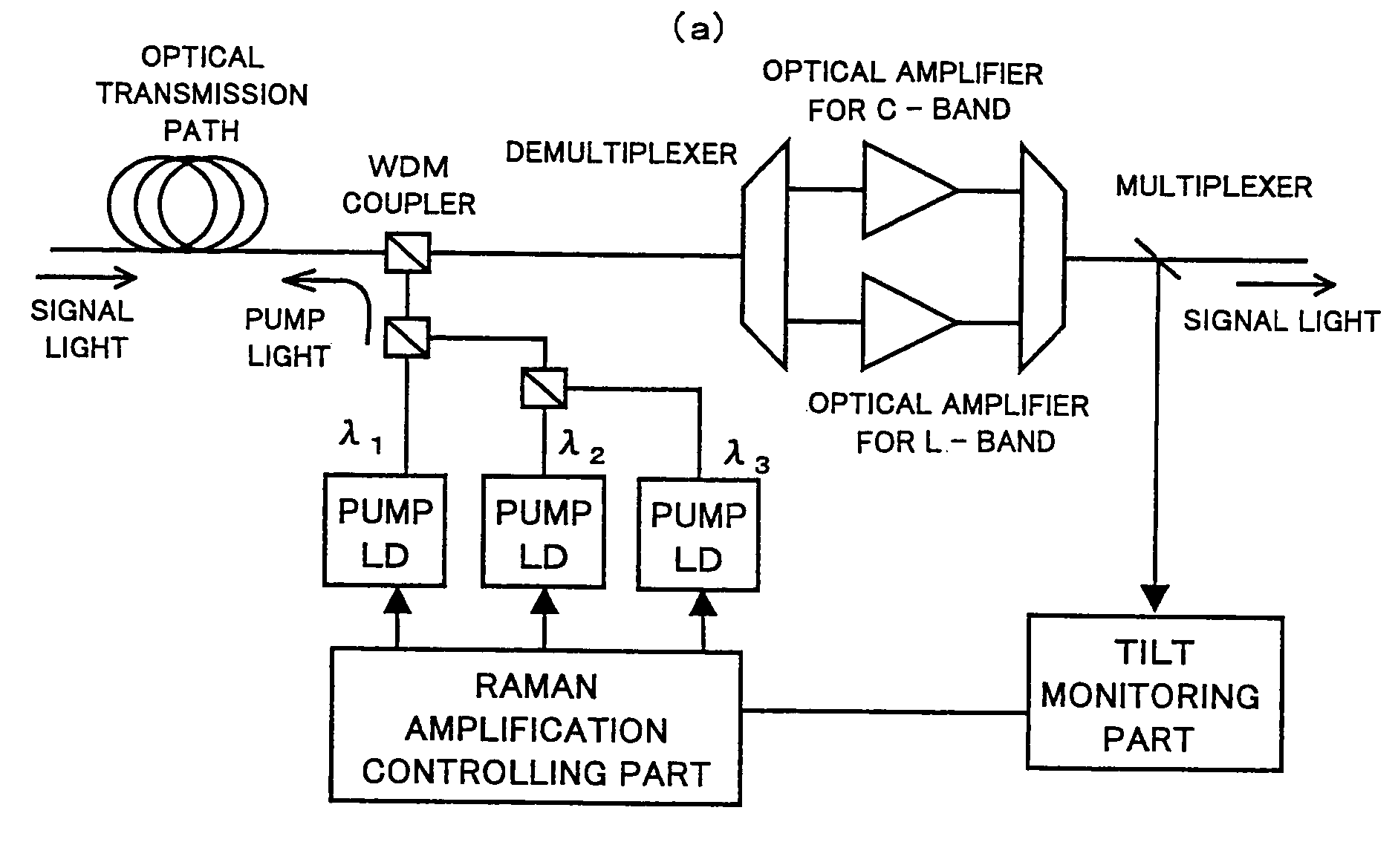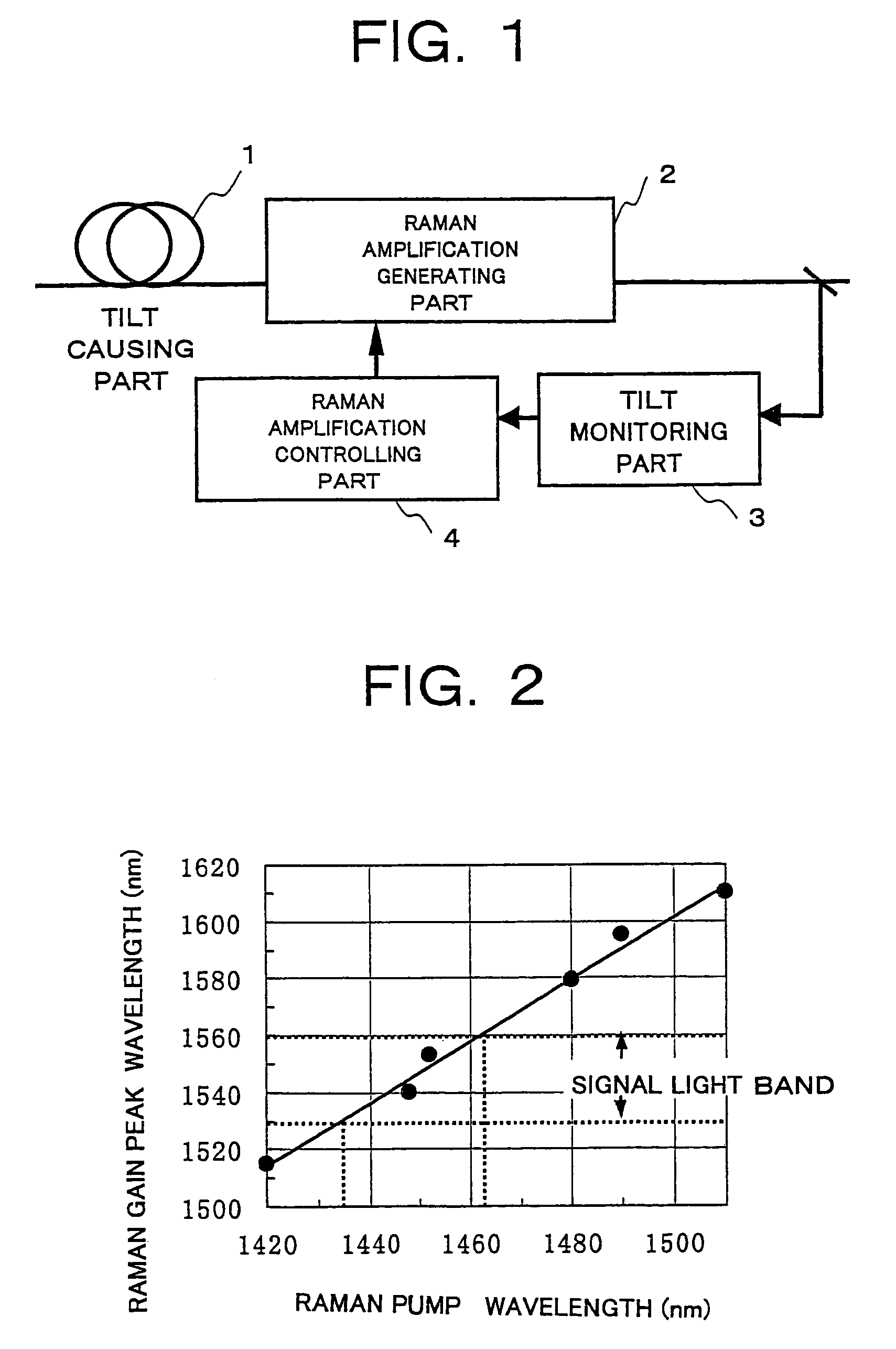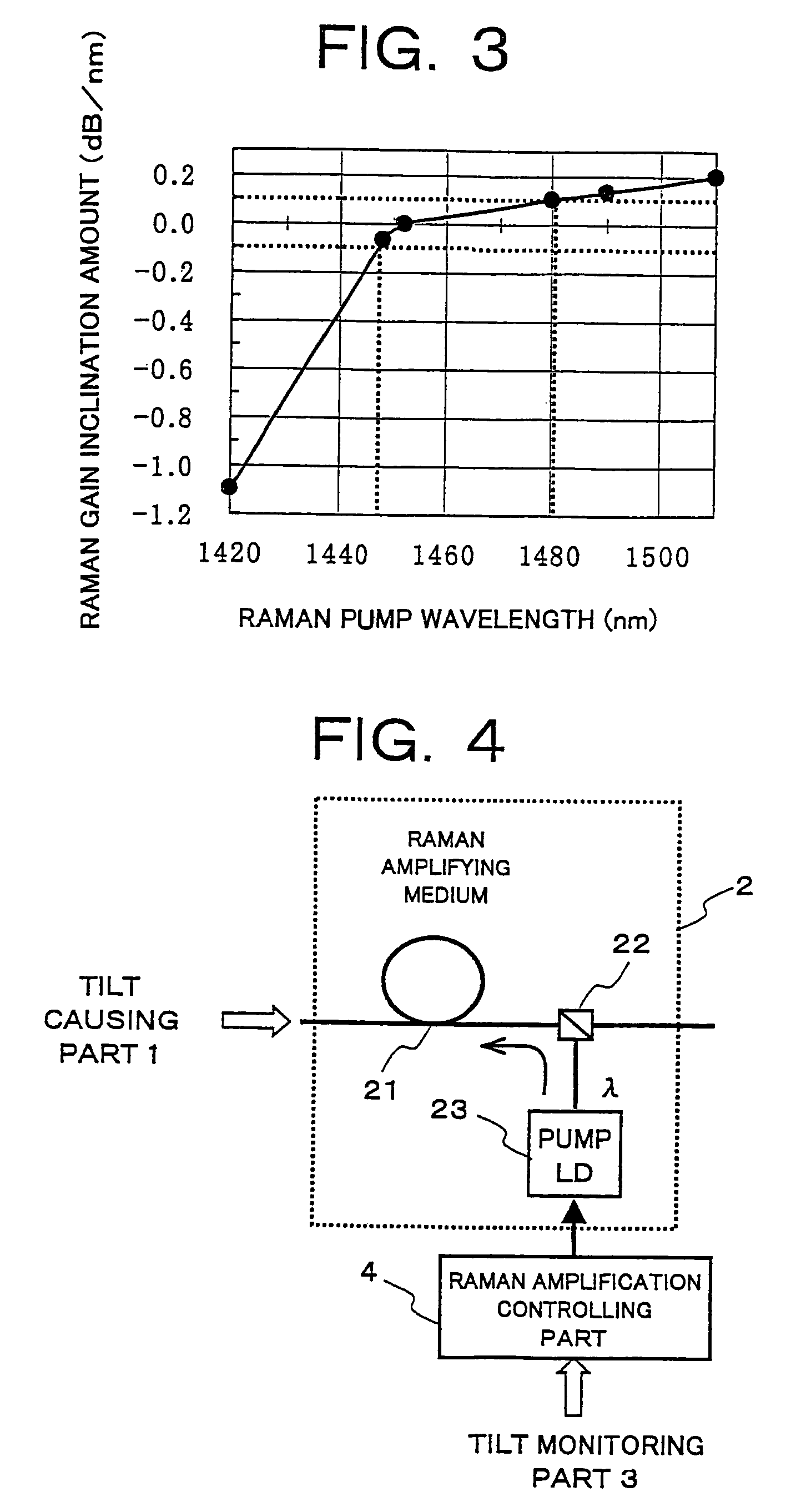Raman pump power control for gain flattening
a technology of gain flattening and power control, which is applied in the direction of multiplex communication, electromagnetic repeaters, instruments, etc., can solve the problems of low limit, degraded optical s/n ratio, and thereby deteriorated transmission characteristics, and achieve the effect of improving transmission characteristics
- Summary
- Abstract
- Description
- Claims
- Application Information
AI Technical Summary
Benefits of technology
Problems solved by technology
Method used
Image
Examples
first embodiment
[0142]FIG. 25 is a block diagram showing an entire constitution of a WDM optical communication system applied with the aforementioned basic constitution.
[0143]The system of FIG. 25 is applied with the aforementioned basic constitution by utilizing optical transmission paths 7 of respective repeater sections as Raman amplifying mediums, for a common WDM optical communication system which repeatingly transmits WDM signal light such as by interconnecting an optical sender (OS) 5 and an optical receiver (OR) 6 through the optical transmission paths 7 and by arranging optical amplifiers 8 on the way of the optical transmission paths 7, respectively.
[0144]Concretely, WDM couplers 22b are provided between output ends of optical transmission paths 7 and input ends of optical amplifiers 8 of repeater sections, respectively. Supplied from a backward side of each optical transmission path 7 via the WDM coupler 22b is pump light obtained by multiplexing by WDM couplers 22a pump light of 1,430 ...
second embodiment
[0160]There will be described hereinafter a
[0161]FIG. 28 is a block diagram showing an essential constitution of a WDM optical communication system according to the second embodiment of the present invention.
[0162]The system of FIG. 28 is applied with the aforementioned basic constitution by utilizing a dispersion compensation fiber (DCF) 9 as Raman amplification medium, for a WDM optical communication system in which wavelength dispersions caused in WDM signal light repeatingly transmitted through the optical transmission path 7 and optical amplifier 8 are compensated by the dispersion compensation fiber 9 inserted into a former stage of the optical receiver 6. Note, this type of system applied with the dispersion compensation fiber 9 as a part of transmission path is one which is being researched and developed for high-speed transmission of WDM signal light at 1.55 μm band making use of a transmission path comprising 1.3 μm zero-dispersion SMF. In the drawing, only the essential c...
third embodiment
[0170]There will be hereinafter described a
[0171]FIG. 31 is a block diagram showing a constitution of an optical amplifier according to a third embodiment applied with the aforementioned basic constitution.
[0172]The optical amplifier of FIG. 31 is applied with the aforementioned basic constitution by utilizing a dispersion compensation fiber (DCF) 84 as Raman amplification medium, for a known optical amplifier which includes a variable optical attenuator (VATT) 83 and the dispersion compensation fiber 84 both arranged between optical amplifying parts (EDFA) 81, 82 of two stage constitution.
[0173]Concretely, an input end of the former stage optical amplifying part 81 is connected to an input port IN of the present optical amplifier. Connected to an output end of the optical amplifying part 81 is an input end of latter stage optical amplifying part 82, via the variable optical attenuator 83 and dispersion compensation fiber 84. Connected to an output end of the optical amplifying part...
PUM
 Login to View More
Login to View More Abstract
Description
Claims
Application Information
 Login to View More
Login to View More - R&D
- Intellectual Property
- Life Sciences
- Materials
- Tech Scout
- Unparalleled Data Quality
- Higher Quality Content
- 60% Fewer Hallucinations
Browse by: Latest US Patents, China's latest patents, Technical Efficacy Thesaurus, Application Domain, Technology Topic, Popular Technical Reports.
© 2025 PatSnap. All rights reserved.Legal|Privacy policy|Modern Slavery Act Transparency Statement|Sitemap|About US| Contact US: help@patsnap.com



